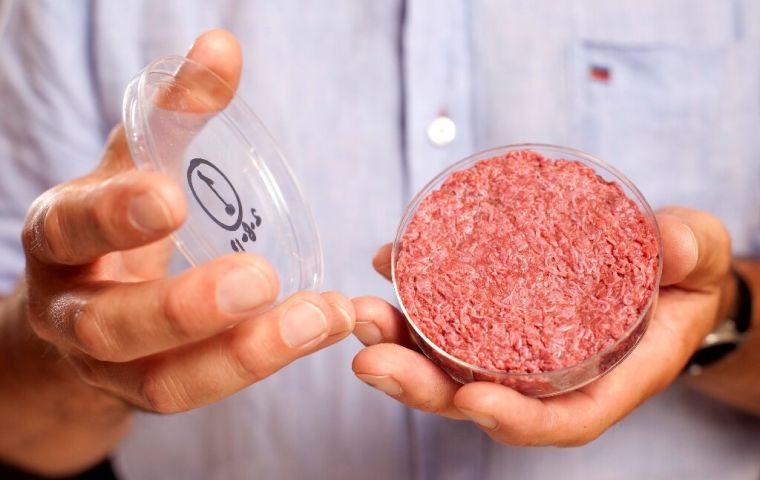MercoPress. South Atlantic News Agency
Cosmo-burgers: Artificial meat made by Russian astronaut in the Space Station
 Tests carried out in space in September led to the production of beef, rabbit and fish tissue using a 3D printer.
Tests carried out in space in September led to the production of beef, rabbit and fish tissue using a 3D printer. Creating meat from cells is no longer the realm of science fiction: A Russian cosmonaut did it aboard the International Space Station, and it is just a matter of time before these products arrive in supermarkets. Tests carried out in space in September led to the production of beef, rabbit and fish tissue using a 3D printer.
This new technology “could make long-term travel possible and renew space exploration,” to Mars for example, said Didier Toubia, the head of the Israeli startup Aleph Farms, which provided cells for the tests.
“But our goal is to sell meat on Earth,” he added saying the idea “is not to replace traditional agriculture,” he said. “It's about being a better alternative to factory farming.”
The first burger designed with cow stem cells was made by Mark Post, a Dutch scientist from Maastricht University, and presented in 2013. Several startups have since taken to the niche market.
The cost of production is still very high, and none of the products are available for sale.
The name for the meat products is still up for debate: Laboratory, artificial, cell-based, cultivated.
But tastings have already taken place, and industry players are banking on small-scale commercialization taking place fairly quickly.
“It is likely to be this year,” Josh Tetrick, the head of California's JUST company, which is growing meat from cells, said at a conference in San Francisco.
“Not on the market in four thousand Walmarts or in all McDonald's, but in a handful of restaurants,” Tetrick said.
“The question is what do you want to put out at what cost,” said Niya Gupta, founder and CEO of Fork & Goode, which is growing meat from cells in New York.
“As an industry, we are finally making progress on the science. The next step is really making progress on the engineering challenges.”
The arrival of laboratory-grown meat on supermarket shelves at reasonable prices could happen in five to 20 years, according to estimates.
But it would need more investment, according to several observers. The sector attracted a total of only US$73 million in 2018, according to The Good Food Institute, an organization promoting alternatives to meat and fish.
Another obstacle is regulation, which remains imprecise.
In the United States, for example, the government outlined a regulatory framework that shared oversight of cell-based foods between the Department of Agriculture and the Food and Drug Administration, but it is not yet finalized.




Top Comments
Disclaimer & comment rulesCommenting for this story is now closed.
If you have a Facebook account, become a fan and comment on our Facebook Page!